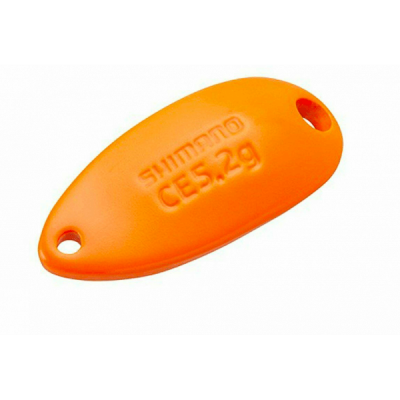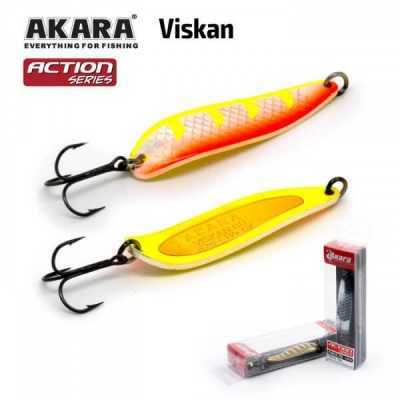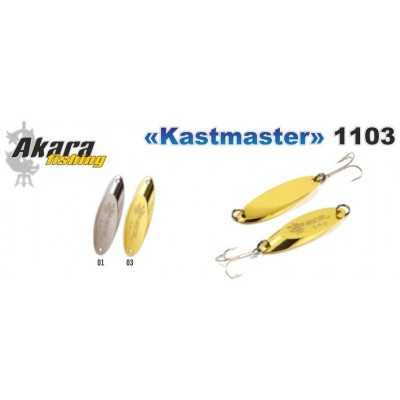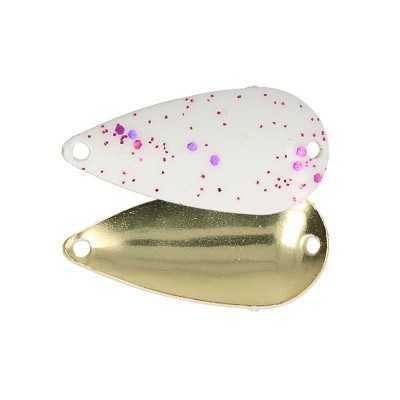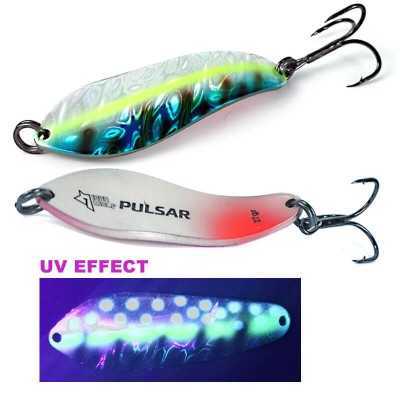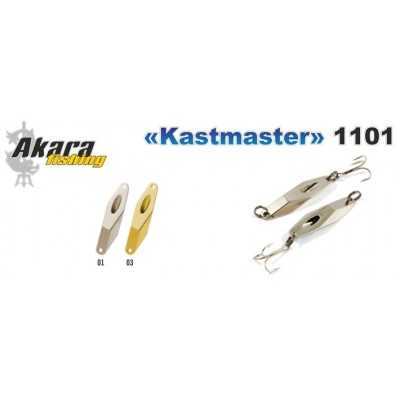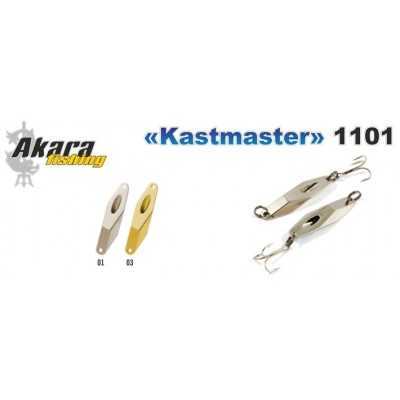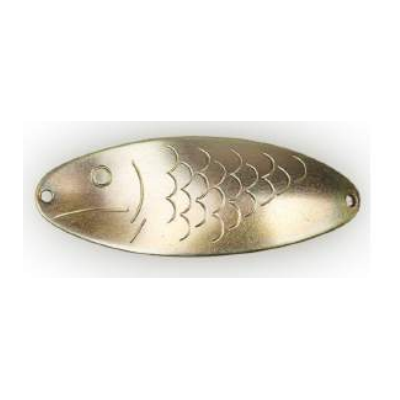Spoons
A glitter lure is a bait, usually made of shiny metal, with an elongated, usually concave, spoon-like shape. The glitter is the first known artificial lure for fish and has remained popular ever since. Of course, many species of fish in the world are no longer caught with glitter, but some species are practically exclusively caught with it. In Lithuania, you probably won't find a angler who still catches sturgeon with the classic glitter. It is not as effective as fishing with rubber bands. Summer glitter is also rarely used for perch, but when it comes to salmon trollers in the sea or salmon fishermen in the rivers, glitter is their main weapon.
The design of the glossy gate
The gloss attracts predatory fish by mirroring the light and creating a side-to-side vibration as it passes through the water. The design of the glitter, also known as a gate, is simple: due to the elongated, concave shape of the blade, the bait waves randomly as it is dragged or sinking in the water, creating flashes of light reflection which, when viewed from a distance, resemble the reflection of the scales of a floating minnow. The swaying of the glitter also creates eddies that can attract the attention of fish. Fish usually feel the vibrations of their lateral line caused by their food, such as fry or larger fish, and the movement of the glitter mimics this quite well. More recently, glitter has started to be coated or painted in different colours, in addition to being made of different metals that have their own tint. The most common type of glitter has a single treble hook at the bottom, although recently it has become popular to equip it with a single solid single hook.
Different shiners for different fish
Until very recently, the most popular way to use shiners in Lithuania was to use them for salmon fishing. This is because shiners cast the farthest (especially cut shiners). These are called thick shiners, which are not spoon-shaped, but are in the shape of a diagonally cut, full-bore tube. Such a gloss is made so that the one side to which the hook is attached is thicker and heavier. This creates the most far-reaching lure on the market and salmon anglers love it because salmon are fearful of fish and stay away from the angler. Recently, however, anglers have noticed that cut gloss is not as effective a lure and are more likely to choose long-range wobblers, but not for all fish. The popularity of shiners for red fish is not decreasing. As for salmon, sea bream, trout, glitter is still very popular for these fish and new models and sizes are being developed. Glosses for smelt and salmon are also very popular in Lithuania. They are slightly different from the classic spoon-shaped glosses and more adapted to the flow. They are usually 7-9 cm long and weigh 18-24 g. Salmon glosses come in a variety of shapes and curves and are more elongated than classic glosses. The most popular for salmon are the S-shaped curved glosses and those painted in the darker shades favoured by salmon, with various dots and holograms. In Lithuania, some of the most popular glosses are Iron Wolf Pulsar, Akara Viskan. They are inexpensive compared to Japanese glosses and are coloured in salmon colours. Trout is another predator that is popular to catch with glitter. Glitter of 3-5 cm and 3-8 g is used for trout in streams. However, commercial trout fishing is now more popular than in streams in artificial spawning grounds where rainbow trout have been introduced. Small trout shiners are used for this purpose, ranging in weight from 1,5 g to 4 g. If there is no wind, it is recommended to use as light a tippet as possible to make it sink as slowly as possible.
Lithuanian glitter
Glitter gates for pike are not very popular nowadays, but still have their fans. The most popular glitter is Lithuanian, made in Tauragė. They are produced by the Zumpė factory. This is not the same Tauragė factory that produced glitter 50 years ago, but the traditions are the same. The most popular pike glosses here are Jūra and Jūratė, the same as 22 years ago when the Zumpė factory opened.
Winter glitter
Glitter is also used for winter ice fishing. They are called vertical shiners, that is, they are designed to be fished vertically downwards. They are much smaller than summer gates and narrower.
The price of a gloss. What does it depend on?
The price of a gloss can vary. When ordering glitter online, you will find a wide range of prices from €1 to €12. The cheapest are the ones made in China, but unlike wobblers, they are not bad. They may just have inferior paintwork, which chips faster, and inferior hooks. What is important for a good gloss is the shape itself, which the Chinese are able to produce, and then the price depends on the mass production and the pricing of the brand itself. The cost of the polish is also influenced by the price of metals on the stock exchange.



